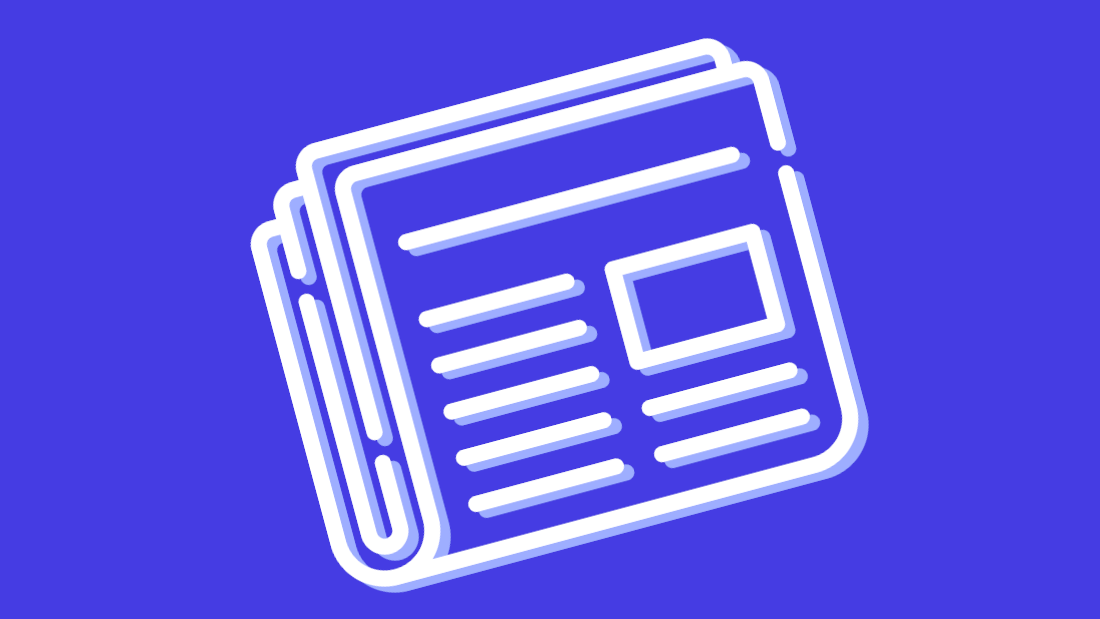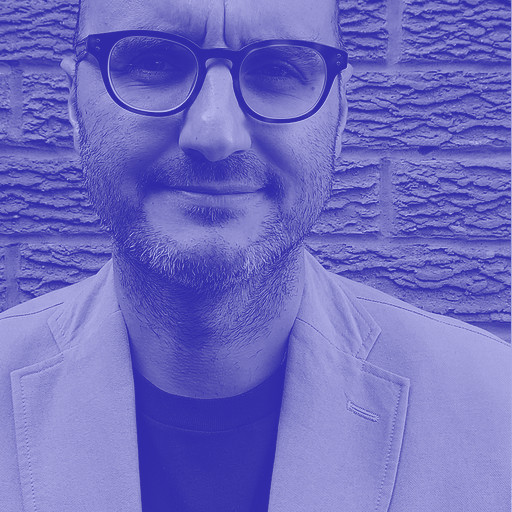The experience and skills that come with a career in journalism can set you up perfectly for a career in content design, based on my experience.
Content design wasn’t even a thing when, as a 15-year-old, I sat uncomfortably in front of a career officer at school. But it was that brief 5-minute conversation which set me on the path.
“I want to be a journalist,” I said. She listened to my squeaky little voice, asked a few questions, took notes, and dismissed me back to class. A week later, I was handed an envelope with a list of potential college courses.
I might never have made it to Fleet Street, but I did spend more than 15 years in various forms of print and digital journalism. And that’s a big part of why I’m a content designer today.
That’s a path many of my awesome colleagues in the content design practice at Sparck have trodden, too: around 40% of us have a journalistic past.
I’m sure that’s because journalism, whether it's in print, radio or television, gives you a very particular set of skills – though entirely different to Liam Neeson’s.
Telling stories with words
There is more to content design than just words. In fact, most of us hate it when people refer to us as ‘writers’ or ‘wordsmiths’.
And, on the flipside, you don’t need to be a great writer to be a great content designer.
But writing is obviously an important part of our work, in practice, on most projects.
A journalist’s ability to use words to tell a story is a skill that not only benefits a user who is interacting with content, but is also vital in getting client and project team buy-in.
We know what’s important
If you want to write a news story ‘properly’, then a journo will use the 5Ws and 1H approach, alongside the inverted pyramid.
The opening paragraph should ideally contain the who, what, where, why and when of the story. Sometimes you also need the how.
That info resides at the top of the inverted pyramid. It’s the ‘lead’ that sits above the ‘body’ and the ‘tail’. The further you move down the pyramid (the story) the less important the information is to the reader.
This ability to create a hierarchy of information can become useful when working in a multi-disciplinary team that might also include a UX designer or product designer.
That’s one of the reasons why content designers should be one of the first to join projects, rather than being pulled in at the end to “tidy up the words”.
Deciding when to tell the user something in the journey is just as important as what we tell them, and how.
Write for the audience and for the medium
Back in the BI (before internet) days, most print journalists worked in newspaper or magazines.
Style of writing, as well as vocabulary, had to be tweaked based on the medium and the prime audience of those publications.
Read the same news story in The Sun and The Guardian and you’ll appreciate the difference.
For example, at a very basic level, The Sun aims for a reading age of 8, the Guardian for a reading age of 14.
That means the vocabulary in The Sun is much more basic and narrow. It also uses simpler sentence structures.
The funny thing is, the people writing for those two very different papers might well have similar qualifications, and have taken the same journalism course. They could probably swap roles and switch styles without any trouble at all.
We ask questions
You’ll get nowhere in either journalism or design thinking if you don’t ask questions.
That’s why, back in the day, one of the key skills that budding reporters were taught was shorthand.
It was ghastly to learn, and thankfully relegated to history by the voice recorder, but you needed it in your toolkit because interviewing people was an essential part of the job specification.
It’s really no different in design. Your content should answer users’ questions before they’ve asked them. And, with that interviewing experience, trained journalists will have the skills to conduct user research sessions themselves if necessary.
We understand visual design
Gone are the days when journalists just used to write copy. Technological advances mean that most of them also know how to work hands-on with visuals.
In the 1990s, that meant using QuarkXpress at a very basic level, as most newspapers or magazines did at the time.
More recently, it’s been about getting familiar with different content management systems (CMSs).
As a result, journalists today understand visual and UX design in a way their predecessors didn’t. They might not be pixel perfect but they are able to talk intelligently to product designers, create low-fidelity prototypes, and even build finished pages using the right CMS.
We know how content is created and how long it takes
Content is easy, right? After all, how long does it really take to write a few words?
A journalist will know the true answer to that irritating suggestion.
They’ll also be aware of how long it takes for an article to be produced and, more importantly, taken through the editorial process so it’s fit for consumption.
The latter is something that adds real value to the content design process.
Getting out error-free content is crucial when it comes to user sentiment. Journalists also have the skill of being able to self-edit. For most people, that’s a real challenge.
But journalism and content design are different
While there are clearly a set of transferable skills from journalism to content design, there are a few things that are different.
Certain rules and guidelines for how a journalist should work won’t necessarily be as important in content design.
That requires a change of mindset.
Learn to chill a little
Journalists can be dogmatic and obsessed with rules.
Style guides, more commonly known as house styles in traditional publishing, do exist in content design. But you need to get comfortable with the fact it’s OK to break those rules if it means the content will work better for the user.
The same goes for certain aspects of grammar. The thought of intentionally leaving out a hyphen in an article as a journalist would have been unbearable to me. But as a content designer, I’ve had to learn to deal with it.
I’ve been in more than one user research session where a correctly placed hyphen has caused confusion. So, doing it ‘wrong’ is the right thing to do.
And if you get twitchy about close repetition of the same word in copy, get over it. If users don’t have a problem with the same words being used repeatedly, then you shouldn’t. Especially if it makes the message less ambiguous and easier to digest.
Content that lives forever
As a journalist the job is done once your work is published. It doesn’t work that way in content design.
A sub-editor will judge and amend your work as a journalist, based on their expertise.
A content designer will have their work critiqued internally, by other content designers, stakeholders, and subject matter experts.
But the ultimate judge of their content is the user. That judgement will come before it goes live and then, ideally, continually after.
While a journalist’s article will basically die with publication, a piece of content design should live and breathe, adapting to the changing needs of users.
And, by the way, it’s much easier to take feedback from users than from an editor.
Bye bye by-line
And finally, if you love being credited for your work with a by-line, then content design might not be for you.
The most effective content design is often not even noticed. It is not about its creator, or your self-expression. It’s about the user. Always.
It’s also collaborative. When you move on from a project, another content designer will probably pick up your work and keep iterating and improving it. So, after a few months, you won’t even be able to show it to your mum and say: “I did that.”
It’s not uncommon for a journo to intentionally leave a personal mark on a piece of writing – I’ve done that in this by-lined blog.
But when it comes to pure content design, be prepared to wear a cloak of invisibility, and let your content talk for you.
- Find out more about content design in ‘The complete guide to content design for product owners’



